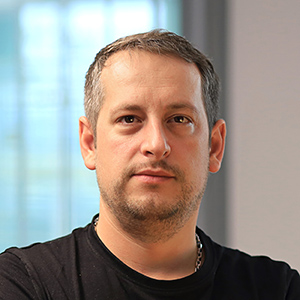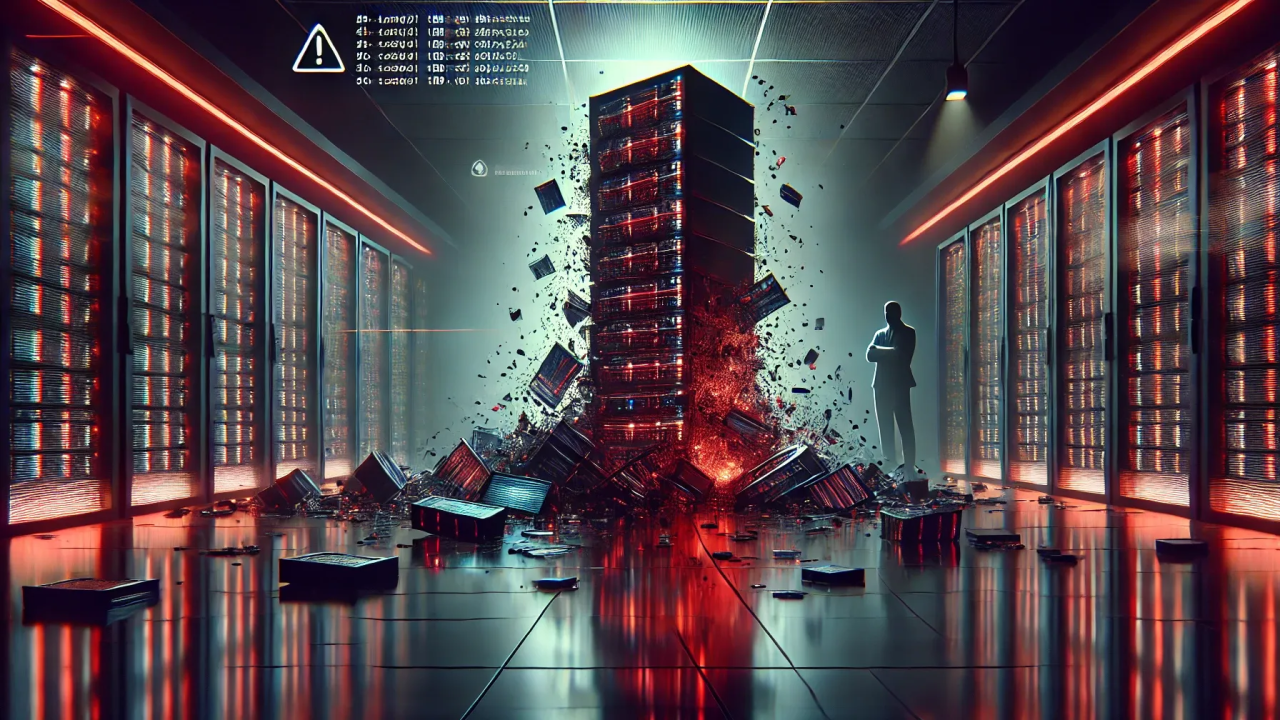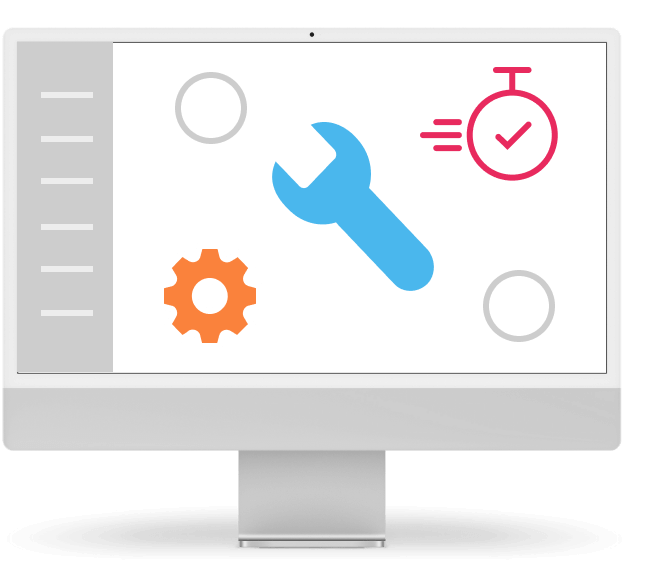What to look for and what to avoid when choosing… cloud
Once and for all – the cloud is not one product.
“We use the cloud.”
“We’re going to the cloud.”
When a company uses these phrases, they may not realize that they’re actually saying nothing at all. Maybe they’re just aware of the technology and using it in some form.
The myth that persists is that the cloud is simply one product. But it’s a set of technological approaches that do the same thing in different ways – they distribute physical computing power in a virtual form.
So let’s get this out of the way right from the start, the idea that the cloud will free us from physical servers and infrastructure. There will always have to be someone who handles the physical layer. Without it, computing resources don’t exist.
So a company can’t approach the cloud as a single solution, because it’s not a single solution. It’s a complex ecosystem of services and models that serve different purposes. That’s why companies sometimes experience such negative consequences when moving to the cloud – they didn’t choose the right cloud.
So in this article, we’ll look at why the cloud exists, what forms it takes, and what mistakes companies make when choosing it.
Key thoughts about the cloud
Let’s start this section with a clear definition. Cloud, or cloud computing, is the provision of physical computing resources over the internet. So to make the cloud work for you, you need someone who will take responsibility for investing in the physical infrastructure and then also internet connectivity.
It is clear that you, as a customer, are looking to minimize CAPEX. The ideal situation is to convert all capital expenditures into operating expenses.
Since this is often the economic reason behind the use of cloud, it is not surprising that the decision to move to the cloud is not a technical decision, but a strategic one. CXOs simply cannot avoid being a part of this decision without it negatively impacting the functioning of the company.
Cloud as a set of what?
As we mentioned at the beginning, cloud can be divided into two main categories – services and models.
Services – what and how much
Models – where and who
With services (sometimes you will come across the term XaaS – Anything as a Service) it is about what I get from the provider and how much responsibility I take on. With IaaS (Infrastructure as a Service), I get pure computing resources and I have maximum control in the virtual environment. This is different from SaaS (Software as a Service), where I receive a specific application operated by the provider, but at the same time I have minimal control.
The models are about where the physical infrastructure is stored, from which computing resources are provided over the Internet, and who is responsible for its operation and management. For example, in a public cloud, the “hardware” is stored with the provider, and he is fully responsible for its operation and management. In a private on-premise cloud, everything is stored with you, the customer, and all responsibility also falls on you.
Most common cloud services
In no way is this meant to show you that one service is superior to another. That is a fundamental misunderstanding about cloud services. Each has its own purpose and place in which it contributes to efficiency. It is therefore never a universal tool and it is up to each company to evaluate whether it fits its needs.
We will look at a comparison of the services that are currently most commonly used. However, this list is far from complete.
IaaS
Infrastructure as a Service involves purely leasing computing resources that the company can then use as it sees fit. It provides the freedom to build and manage the environment on which systems and applications run. But that also means it has the most management requirements and you need to have IT people who understand that specific environment.
PaaS
Platform as a Service is often the choice of developers. In addition to computing resources, it includes everything they need to effectively develop applications. This saves development time, but it also deprives developers of the level of control over the infrastructure they would have with IaaS.
SaaS
Software as a service is very popular not only with companies, but also with end users. These are ready-made applications and systems that run on an external server of the provider, which you can access via the Internet. In fact, the only thing you care about is what you do within the application. As a user, you have no ability to influence the functioning of the infrastructure at all.
BaaS
Backup as a Service is an option for companies to maintain a back up offsite and in a different environment, minimizing the risk that neither the main environment nor the backup will survive an incident. However, companies still struggle with not seeing the benefits, only the price tag for such a solution. Often, however, only until an outage takes everything away.
DBaaS
Database as a Service is often the choice of companies that do not want to have their own experts for a given database, but need it for their operation. Users only work with the data, but do not have to worry about operation, maintenance and problems. However, the trade off is the transfer of internal data to an environment that is managed by the provider and not the company. So be careful about which data you choose such a service for.
Cloud models
There are not as many of these as there are services, because there are only a certain number of combinations of external and internal ownership.
Public cloud
Let’s start with zero ownership of the physical infrastructure by the end user. The public cloud is a purely shared infrastructure, which is often the choice of companies that do not have high demands on computing power and are looking for quick provisioning and low initial costs.
Since the resources are shared, you lose the ability to fully customize the environment. Most often, companies take individual virtual servers from public clouds. But beware of dependence on a large provider, which does not put you in an easy negotiating position.
Private cloud
The opposite is a private cloud, where you are both the user and the owner of the physical infrastructure. Companies often choose this option for security reasons. If the private cloud is located within the company’s premises, then it is not necessary to transfer data over the Internet (the exception, which, as with everything, confirms the rule).
However, for more efficient operation, some companies choose to be located in a data center, where the physical needs of the physical infrastructure are well taken care of.
Hybrid cloud
It means exactly what it sounds like – this model is a hybrid between public and private cloud. Thanks to this approach, a company can properly distribute workloads according to their needs and use maximum security where the data requires it. This model is extremely flexible and can take many forms and layouts.
However, with this level of flexibility also comes the advanced knowledge that IT professionals must have in order to be able to work with and manage a hybrid cloud.
Multicloud
Maximum efficiency can also be achieved by distributing workloads across different provider environments. If data security is not a priority or is not legally required in some form, a company can use different cloud providers to achieve maximum operational efficiency.
However, such an environment requires experts for each part, which of course increases the complexity of management and also the costs.
Why do they run then?
As we have shown, the cloud really has many faces and many forms. So when we hear that companies are leaving the cloud, it is not entirely true. Rather, we should say that they are abandoning one model or service and looking for another cloud solution. Today, only a few run purely on a physical server.
However, there are reasons for the change, and they currently fall into two basic categories.
Digital sovereignity
With the advent of the cloud, companies did what people do when there is a hot new product – run. Without thinking, without analysis. So it is not surprising that there are reasons why it was not such a good decision.
Many European companies run on American clouds and with the implementation of GDPR and other European legislation, everyone is tsarting to realize that Europe is fully dependent on the US and can also be quite burdened in the event of intercontinental problems.
Companies do not actually have control over where their data is stored, and with the advent of American legislation, it may happen that the American government will have access to all their data.
So there has started to be a shift away from XaaS and public cloud, which are provided by non-European companies, and the era of local clouds and hybrid solutions has begun.
Note: No, the fact that data is stored in a European data center is not everything. It’s about the jurisdiction under which the provider that holds your data falls.
Repatriation
And as always, money is also a reason to leave. The mass rush to the public cloud almost ruined some companies financially. They didn’t make decisions based on a needs analysis, so they chose a solution that was absolutely not suitable for them. They paid a heavy price for it. Literally.
But repatriation is not necessarily about moving everything from the public cloud to “hardware”. It’s more about moving away from a bad decision and moving towards optimization. Quite often, the repatriation tool is a hybrid cloud.
The most common mistakes when choosing a cloud
We have already encountered one and it is not only a privilege of the cloud – reckless use. But that is more of a thing of the past, because the cloud is no longer a shiny new thing.
However, other errors are also related to the analysis. The most common is underestimating TCO (total cost of ownership/operation). Public clouds often entice companies with free credits. However, aspects that do not have a price tag need to be reflected in the price for the environment as well.
These credit campaigns often result in vendor lock-in. The company can then no longer switch to another environment because it depends on the proprietary technologies of the given provider. The company can no longer choose the most cost-effective path and often overpays, even though it could run cheaper elsewhere while maintaining the quality of the service.
This is precisely the trap of cloud services that eliminate CAPEX. Companies are discouraged by other categories that require some investment. However, they do not consider that in the long-term the choice should be completely different.
Another common mistake is ignoring the absence of some features. For example, companies will take a foreign service, but will no longer take into account that they will not have support in their native language. In addition, if the support center is outsourced, it can sometimes be difficult to understand each other due to the strong accent.
Another big mistake is ignoring the requirements of European legislation. This goes much further than GDPR. In recent years, DGA, DORA or NIS2 regulations have appeared. The emphasis on security and resilience is growing but not every cloud subset can satisfy them.
Companies also often don’t think about an exit strategy. When choosing a cloud, it is necessary to check how easy it would be to leave the given environment. It may happen that an environment that is so amazingly cheap will be the most expensive nightmare when trying to change providers or solutions.
Lastly, we will mention blind faith in the cloud. Some companies choose cloud in any shape or form because everyone has to go to the cloud. But that is simply not true. Moreover, they say this with the idea that everyone has to go to the public cloud. That is not true at all.
Every choice of infrastructure, system or application should be preceded by a thorough analysis of needs. Without it, you can almost certainly say goodbye to efficiency and cost optimization.
There are certainly many more mistakes, but as you can see, they often result from people not understanding that the cloud hides many possibilities and is not a label for just one solution.
So how do you approach the cloud correctly?
As a tool, not a goal. And a tool that comes in many forms, but not all of them are the right choice. Every company must choose its strategy based on its needs and then find a cloud that will match it. If you do it the other way around, it will never be the right approach.
As a CXO, don’t be afraid to get involved in the decision-making process. It’s the only way you can truly make the right choice.





